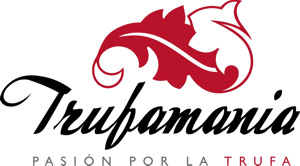Eremiomyces innocentii Ant. Rodr. & Bordallo
Persoonia 38: 325 (2017) [MB#820114]

(Click on the picture to see more images)
Etymology:
Named after Mauro Innocenti, for his outstanding contribution to knowledge of hypogeous fungi of the Canary Islands.
Macroscopic characters:
Ascomata: hypogeous, subglobose, 2–4 cm in size, pale brown colour with pink spots and yellowish cracks in fresh, pale brown colour in exsiccata, smooth.
Peridium: 150–400 µm thick, well-defined, concolorous with surface in cross section, prosenchymatous, composed of parallel arranged hyphae, 15–20 μm broad, walls 1–2 μm thick, some hyphal cells inflated to 50 μm diam, yellowish in KOH.
Gleba: composed of dark red pockets of fertile tissue marbled by yellowish, sterile veins of subparallel hyphae 3–5 μm diam.
Distibution, Habitat and Season:
Spain, Canary Islands, Tenerife, arid zones in calcareous sandy soils, associated with Helianthemum canariense, in February.
The annual rainfall is about 50–300 mm in the lower levels (Inframediaterranean), specifically around 200 mm in the study area. Rainfall can be high in a short period of time in the case of storms from the west or the south of the islands, reaching 200 mm or more in three or four days.
From the geological point of view, in the study area there are quaternary basaltic laves covered with extensive layers of pumicite, pumice stone, and ignimbrites, from the same period. A part of the area is an old pumicite quarry for local buildings materials. Deposits of carbonate soils, called locally "caliche", give alkalinity to the substrate. The vegetation is composed of a xerophytic scrub of endemic elements of the Canary islands and the nearby African coast. Euphorbia balsamifera is dominant, Plocama pendula, Ceropegia fusca and Launaea arborescens are frequent, Euphorbia canariensis and Kleinia neriifolia are found scattered. Most of the herbaceous substrate is covered by the host plant, H. canariense, with the presence of a few Asphodelus sp. and, occasionally, some grasses, such as Hyparrhenia hirta.
Notes:
Eremiomyces innocentii is the first Eremiomyces species described with amyloid asci. Eremiomyces magnisporus was described from a single ascoma where asci could not be found due to the advanced maturity of the sample (Alvarado et al. 2011). Moreover, it differs from all other Eremiomyces spp. by its larger spores (16–18 µm) than E. echinulatus (10–14 µm) and E. magnisporus (14–17 µm), excluding the ornamentation.

(Click on the picture to see more images)
Microscopic characters:
Asci: Asci amyloid, thin-walled, mostly cylindrical, sometimes clavate-cylindrical, sessile or short-stipitate, 150–180(–200) × 30–40 µm, with 6–8 uniseriate spores, randomly arranged in fertile pockets.
Ascospores: globose, (16–)17–20(–21) µm diam (median = 18,5 µm) including ornamentation, (15–)16–18(–18,5) µm (median = 17 µm) without ornamentation, by maturity yellow and ornamented with conical, blunt spines, 1–2 µm long, 1 µm diam at the base, sometimes truncated, often joined at the base to form ridges.
| Antonio Rodríguez trufamania@gmail.com antonio@trufamania.com |



